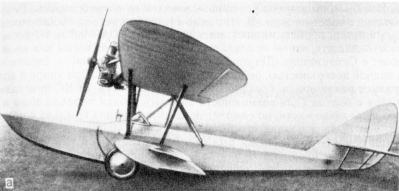| Technical data | |
|---|---|
| Type | Sh-2 |
| Function | Utility amphibian |
| Year | 1930 |
| Crew | 1-2 |
| Engines | 1*100hp M-11 and derivatives |
| Length | 8.2m |
| Wingspan | 13.0m |
| Wing area | 21.7+2.9m2 |
| Empty weight | 660kg |
| Loaded weight | 937kg |
| Wing Load (kg/m2) | 38.0 |
| Power load (kg/hp) | 9.3 |
| Speed at 0m | 139km/h |
| Landing Speed | 60km/h |
| Landing Roll | 100m 10sec |
| Takeoff Roll | 100m 10sec |
| Turn time | 19sec |
| Range | 450...1300km |
| Flight Endurance | 4...11h |
| Ceiling | 3850m |
| Climb | |
| 1000m | 8.3min |
| 2000m | 19.2min |
| 3000m | 36min |
| Payload | |
| Seats | 2 |
Sh-2, ASh-2 by V.B.Shavrov
 |
The first mass built Soviet hydroplane. 3...4-seater sesquiplane amphibian flying boat of wooden design, development of the Sh-1. It differed by more powerful cowled engine and increased size. Hook for craning was included. Larger fuel tank allowed to triple flight endurance. Cockpit size was the same as on the Sh-1, with room for 1-2 passengers behind crew of two. Folding upper wing allowed convenient storage. For winter use Sh-2 could be installed on skis.
 |
Sesquiplane parasol layout with upper wing shifted forward allowed wide safe range of CG. Lower wing had twelve sealed sections, providing enough volume to keep aircraft afloat in case of crash landing. Thanks to November 14, 1930 accident, this system proved itself. While landing ('watering'?) on 0.6-0.8m waves the hull front section was damaged and filled with water. Lower wing kept it safely afloat...
 |
The Sh-2 passed State Acceptance trials at NII GVF on June 12-17, 1931 without any problems. Production started on April 1, 1932. Factory production was ceased in 1934 when more advanced aircraft became available. But light, simple, and reliable multi-purpose aircraft was very popular, and in 1939 production was restarted at numerous repair depots within GVF structure.
Sh-2 served as a trainer at pilot schools and clubs, as a liaison, light transport and observation aircraft in rural areas of Siberia and North.
During production time several improvements were introduced, mostly in powerplant (more powerful M-11 derivatives) and fuel system. Some late batches (1954) had enclosed cockpit and pneumatic engine starter.
Sh-2 was also built in ambulance and hydroplane (with landing gear deleted) configurations.
Production totalled at least 700, about half of those built after 1939. Sh-2 was in service until 1964, setting record of service time among hydroplanes and flying boats, quite close to the U-2 (Po-2) with its incredible career.
|
|
Drawing used for this page background exists at Sh-1 at Virtual Aircraft Museum |
| Predecessors | Modifications | |
|---|---|---|
 Sh-1 |
Sh-2 flying boat |
Sh-26 ambulance |
| References | Links |
|---|---|
|
|
|